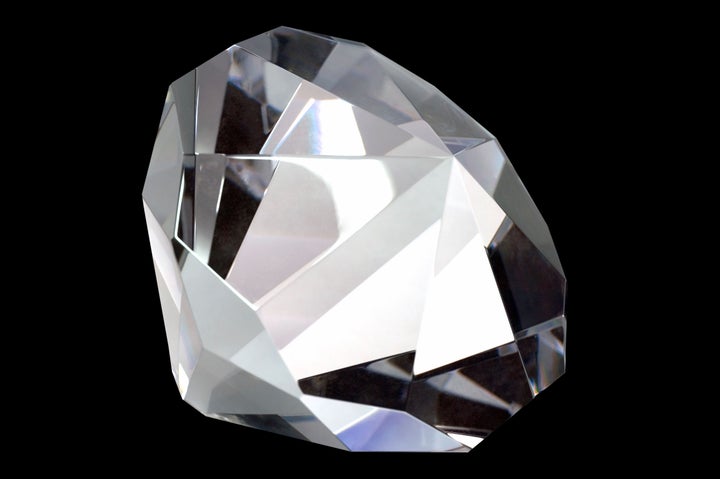
It's De Beers' worst nightmare -- huge planets, many times larger than Earth, composed of precious diamonds.
But executives at the diamond empire founded by Cecil Rhodes needn't worry. A new study says these "diamond planets," if they do exist in our Milky Way, are between 73 and 250 light-years away and are likely places where life as we know it cannot exist.
"We think a diamond planet must be a very cold, dark place," study leader Wendy Panero, an Associate Professor with the School of Earth Sciences at Ohio State University, said in a statement.
To make matters worse for those seeking their fortunes in outer space, the diamonds would actually be buried quite deep below the planet's graphite surface.
Cayman Unterborn, a doctoral student who worked with Panero, told The Huffington Post that the diamonds would lie about 150 km (93 miles) underground. To put that into perspective, the deepest manmade hole on Earth measures about 12 km, or 7.67 miles (Exxon Neftegas Limited has the distinction of holding that record). In the words of Unterborn, "You're going to have to get a pretty hefty shovel to get down there."
Unterborn spoke to HuffPost from San Francisco, where last week he presented the findings at the American Geophysical Union Fall Meeting.
According to Panero, the internal structure of these diamond planets could resemble that of Earth's, with its varying layers. But unlike Earth's core, which is mostly iron, and its mantle, which is rich in silica-based minerals, a diamond planet's interior would be primarily composed of carbon.
Earth's hot interior results in geothermal energy, making our planet hospitable.
Diamonds transfer heat so readily, however, that a carbon super-Earth's interior would quickly freeze. That means no geothermal energy, no plate tectonics, and -- ultimately -- no magnetic field or atmosphere.
"These planets are pretty much going to be dead volcanically," Unterborn told The Huffington Post.
Panero and her colleagues came to this conclusion while studying how diamonds form in Earth's lower mantle. They then built computer models that showed how this process would occur on planets with a higher composition of carbon.
The models showed that it's "possible for planets that are as big as fifteen times the mass of the Earth to be half made of diamond," Unterborn said in the statement.
In August, scientists announced the discovery of another type of diamond planet. Unlike Panero's super-earths, though, this diamond planet, which is 4,000 light years away, is most likely the remnants of dead star.
Unterborn told HuffPost that while the prospect of a diamond planet may be thrilling for many people, he's most excited about the bigger picture.
"As planetary scientists we're looking for earths because we want to find life," Unterborn said. "[This study] tells us that there are many types of planets in our galaxy that we didn't know existed and are unlike anything in our solar system, and that's just as exciting."
But the question remains -- at 73 light years away, how will we reach these diamond planets? The Atlantic Wire's Eric Hayden has a pretty good suggestion: "a diamond-industry sponsored space expedition."
Grab your shovels.
